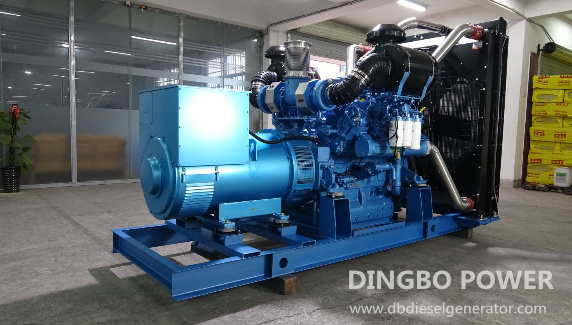dingbo@dieselgeneratortech.com
+86 134 8102 4441

- Home
- Products
- About Us
- Service
- News
- Technical Support
- Contact Us
dingbo@dieselgeneratortech.com
+86 134 8102 4441
May. 26, 2025
The excitation system of AC generator (alternator) is a critical component of power systems, primarily responsible for controlling and regulating the generator’s excitation current to ensure safe and stable operation. It consists of two main parts: exciter and excitation regulator. Today, Dingbo Power will explore the functions and working principle of alternator excitation systems.
The excitation system adjusts the excitation current to keep the alternator’s terminal voltage at a set level, ensuring power system stability.
Three key reasons for maintaining voltage:
Equipment safety: Power system devices have rated and maximum operating voltages. Ensuring the generator’s terminal voltage remains within permissible limits—both under steady-state and post-disturbance conditions—is essential for safeguarding equipment. For example, large synchronous AC generators must not exceed 110% of their rated voltage.
Operational efficiency: Alternators operate most economically near their rated values. Voltage drops below 90% of the rated value increase stator current for the same power output, raising losses. Below 95%, load limits are imposed.
Stability enhancement: Improved voltage regulation aligns with power system stability goals. Excitation systems significantly enhance static, dynamic, and transient stability through simple, cost-effective measures.

Manages reactive power allocation among parallel-operating generators to maintain system-wide reactive power balance.
Adjusts excitation current to improve the generator’s static and transient stability, especially during major grid disturbances.
Quickly extinguishes the magnetic field during internal generator faults to minimize damage.
Enforces maximum and minimum excitation limits to prevent over-excitation or under-excitation.
Exciter: Provides excitation current to the alternator rotor via DC exciters, AC exciters, or static self-excited systems.
Excitation regulator: Uses input signals (e.g., voltage, current) to control the excitation power unit’s output, ensuring precise current regulation.
Automatic voltage regulator (AVR): Automatically adjusts excitation current during faults (e.g., short circuits) to maintain safe voltage levels.
Thyristor rectifier devices: In static self-excited systems, thyristors convert AC to DC to supply excitation current.
DC excitation Systems: These systems use DC exciters with brushes and commutators (require periodic maintenance). They are suitable for small-capacity generators.
AC excitation systems: Brushless design with AC exciters rotating on the same shaft as the generator. They are ideal for large generator sets.
Static self-excited systems: Employ thyristor rectifiers (no rotating parts, high reliability). These excitation systems are widely used in large generator sets.
Through these functions and principles, excitation systems play a vital role in ensuring the safety, stability, and efficiency of generators in power systems.
Don’t hesitate to reach out for any further information or assistance regarding to generator excitation systems or diesel generators. Contact us at dingbo@dieselgeneratortech.com, and we will gladly help you.
Quicklink
Mob.: +86 134 8102 4441
Tel.: +86 771 5805 269
Fax: +86 771 5805 259
E-mail: dingbo@dieselgeneratortech.com
WhatsApp: +86 134 8102 4441
Add.: No. 10 Kechuang Road, High tech Zone, Nanning, Guangxi, China